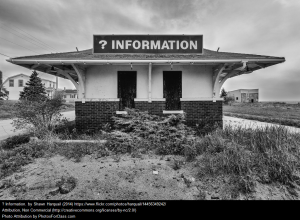There is a need for a consistent approach to information literacy across the school and the TL is in an ideal position to assist and collaborate in the development and implementation of such a model. As much of the research suggests (Langford, 1998; Bruce, Edwards, & Lupton, 2007), when implementing an appropriate IL model, context and purpose must be taken into consideration. I agree with Lupton (2004) in that IL is an approach to learning. I believe IL to be the catalyst for deep and meaningful learning. When seeking and using information, IL assists in the process and in developing understanding of the material. The six frames seem to be suitable for different contexts of information learning; depending on the needs of the learner. For example, the Competency Frame takes on a behaviourist approach, whereby a set of competencies are taught at a particular time in response to a particular need. In Forum 5.2_2, Watterson (2017) highlights in her experience in primary education, these students need a skills-based approach to master basic IL skills before moving onto higher order skills in later years.
The Frame that sits most comfortably with me is the Learning to Learn Frame, as it is constructivist in nature and an approach that I believe is most useful and relevant to enhancing student engagement and learning. However, as mentioned earlier, all frames have their use and place in IL, so I also find the Relational Frame very interesting as a way of bringing together different approaches; content and experiences. Ultimately, it makes the most sense to make use of different frames to meet different needs. I thought this section of Bruce, Edwards and Lupton’s (2007) reading was really poignant: “Being encouraged to experience information literacy in a range of increasingly complex ways will mean that students have a broader repertoire upon which to draw with each situation where they are learning through finding and using information” (p. 54).
Bruce, Edwards and Lupton (2007) also identify the need to be explicit in our IL instruction and not assume that students know how to write an argument or find relevant information; therefore, we must explicitly teach the task words as part of IL instruction. So that students can achieve, we need to set them up for success by being explicit in our expectations. As IL specialists, we also need to address a range of different skills needed to be IL; including assessing the validity of sources. Bruce, Edwards and Lupton (2007) suggest there is a need to go beyond a web evaluation checklist, to highlight the level of writing or sophistication of sources (p. 53). There is a need for students to make use of a variety of reliable sources; therefore, there is a need for students to be able to assess the written quality of sources. Student evaluation of sources should include the “surface signs of authority” and the “ideas, opinions and perspectives apparent in the source and the quality, style and tone of the writing” (Bruce, Edwards & Lupton, 2007, p. 53). In my IL role, I could embed these different frames into an IL process for my students and into learning experiences, so that students can experience the process firsthand. I will need to work closely with my colleagues to develop an IL model that provides authentic contexts, relevant applications and/or issues, ongoing assessment, innovative learning experiences, and embedded information literacy skills (Abilock, 2017).
References
Abilock, D. (2015). Information literacy. Building blocks of research: Overview of design process and outcomes. NoodleTools. Retrieved from https://web.archive.org/web/20160409135915/http://www.noodletools.com/debbie/literacies/information/1over/infolit1.html
Bruce, C., Edwards, C., & Lupton, M. (2007). Six frames for information literacy education. In S. Andretta (Ed.). Change and challenge: Information literacy for the 21st century. Blackwood, SA: Auslib Press. eBook, CSU Library Reserve.
Langford, L. (1998). Information literacy: A clarification. School Libraries Worldwide, 4(1), 59-72. Retrieved from http://www.fno.org/oct98/clarify.html
Lupton, M. (2004). The learning connection: Information literacy and the student experience. Adelaide: Auslib Press.
Watterson, S. (2017, April 28). Forum 5.2_2 Information literacy [Online forum comment]. Retrieved from https://interact2.csu.edu.au/webapps/discussionboard/do/message?action=list_messages&forum_id=_84785_1&nav=discussion_board_entry&conf_id=_42098_1&course_id=_23912_1&message_id=_1117050_1#msg__1117050_1Id
[Reflection: Module 5.2]
